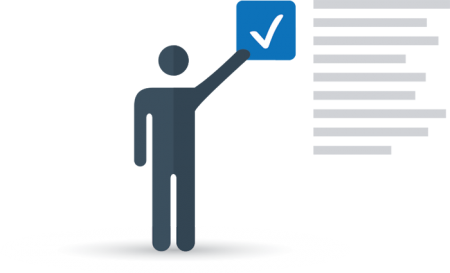Survey Training Course Curriculum
This page presents the survey training course curriculum for our Workshops
– Questionnaire Design Essentials
– Survey Design & Admnistration and
– Survey Data Analysis
Click on the section headers to see the questions that will be answered during the workshop.
The “day” below refers to our 3-full-day, live, in-person workshop deliveries, which is still our preferred delivery mode. Our online, asynchronous workshop offerings contain all the same content, but you get to define a “day.”
Questionnaire Design Essentials Workshop Detailed Curriculum
Are you wondering “What’s the difference between the Questionnaire Design Essentials Workshop and the Survey Design Workshop?” Good question.
Feedback we received was that some people wanted just a one-day class with the essentials of questionnaire design. That’s the Questionnaire Design Essentials Workshop. The 2-day Survey Design & Administration Workshop allows us time to cover some additional topics on questionnaire design.
Our online Survey Questionnaire Design Workshop includes all the information for questionnaire design since we don’t have the 1-day constraint in a live class.
Survey Overview & Project Management
- Definition of a scientific survey and key terminology
- Key challenges to getting meaningful results
- Surveys in a research program
- Types of surveys
- Periodic (relationship), transaction-driven, one-time
- Key stages of a survey project and requirements of the project manager
- Exercise: Developing a Statement of Research Objectives and how it drives the project flow
Questionnaire Design (Instrument Design)
- Elements of a questionnaire
- Invitations, introductions, instructions, section headings, branching, and closings
- Types of questions
- Demographic, attitudinal, and attributes of the phenomena of interest
- The questionnaire design process: The steps to follow
- How to identify the questions needed on the survey to achieve the research objectives
- Role of focus groups, interviews, and other research techniques
- Conducting (and importance of) pilot testing (pre-tests)
- Critical issues for writing valid questions
- Identifying common errors in question construction that lead to instrumentation bias
- Double-barrel questions, ambiguous wording, recall expectations, loaded wording, etc.
- Review of various question formats
- Open-ended text
- Multiple choice checklists, single and multiple
- Ordinal — Forced ranking and ordered checklist
- Interval rating — Likert or Likert-type, fixed sum, horizontal numerical
- Ratio
- Question format review includes
- Impact of question format on data analysis potential
- Each format’s effective use and critical design concerns, especially for interval-rating scale construction and anchor selection
- Exercises
- Identifying attributes to measure on a survey and classifying them
- Critiquing a survey instrument (with lots of problems)
Survey Design & Analysis Workshop Detailed Curriculum
Survey Overview & Project Management
- Definition of a scientific survey and key terminology
- Key challenges to getting meaningful results
- Surveys in a research program
- Types of surveys
- Periodic (relationship), transaction-driven, one-time
- Key stages of a survey project and requirements of the project manager
- Exercise: Developing a Statement of Research Objectives and how it drives the project flow
Questionnaire Design (Instrument Design)
- Elements of a questionnaire
- Invitations, introductions, instructions, section headings, branching, and closings
- Types of questions
- Demographic, attitudinal, and attributes of the phenomena of interest
- The questionnaire design process: The steps to follow
- How to identify the questions needed on the survey to achieve the research objectives
- Role of focus groups, interviews, and other research techniques
- Conducting (and importance of) pilot testing (pre-tests)
- Critical issues for writing valid questions
- Identifying common errors in question construction that lead to instrumentation bias
- Double-barrel questions, ambiguous wording, recall expectations, loaded wording, etc.
- Review of various question formats
- Open-ended text
- Multiple choice checklists, single and multiple
- Ordinal — Forced ranking and ordered checklist
- Interval rating — Likert or Likert-type, fixed sum, horizontal numerical
- Ratio
- Question format review includes
- Impact of question format on data analysis potential
- Each format’s effective use and critical design concerns, especially for interval-rating scale construction and anchor selection
- Exercises
- Identifying attributes to measure on a survey and classifying them
- Critiquing a survey instrument (with lots of problems)
Survey Data Analysis Workshop Detailed Curriculum
Analysis of the Survey Data
- What to do before you start analysis
- Setting up the spreadsheet and data cleansing
- The statistical procedure to answer questions from the survey analysis
- Generating the basic, descriptive statistics using Excel®
- Frequency distributions, cumulative frequency distributions, mean, mode, median, confidence statistic, etc.
- Determining whether survey scores across groups are significantly significant differences
- t-tests and Chi-square tests
- Pivot tables to generate analysis along demographic segmentation
- Determining what drove the respondents’ views of the organization using correlation and regression
- You are welcome to bring your laptop and apply the techniques we learn to your own data set in class. Don’t have a data set yet? We have a sample data set that you can analyze. This is optional.
- Please note: this day of survey data analysis is not a substitute for a college-level statistics class. In teaching this part of the class we assume some basic understanding of Excel and statistics. We focus on how to execute analysis of a survey data set to answer key questions, but time does not allow getting to the theory behind the statistical procedure.
Presentation of the Results
- Ideas for organizing the data and management report for maximum effect
- Charts that work for each question type
- Good graphic design practices that keep the reader focused on content, not technique, and don’t distort the message
Teaching Approach. The Workshop uses lecture, discussion, and experiential exercises to provide the attendees with actionable learning that can be immediately applied back in the workplace. (People have different learning styles, so a blend of teaching styles works best.)

